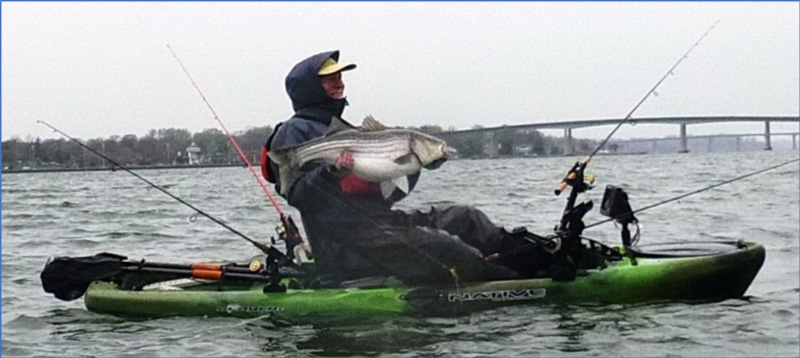Much of my kayak fishing is done by trolling in water of three- to six-feet of depth and even when using light lures, I need to worry about them dragging on the bottom and picking up debris. I need to keep moving most of the time, stopping only to reel in a fish or check my lures. If I do stop, I’ll reel in all the lines to make sure those other lures did not get fouled while dragging on the bottom.

Trolling speed is critical to think about. In my smaller kayak, without any electronics, I paddle at what feels like a comfortable speed to keep the lures swimming well. In my larger kayak I have a GPS unit, can monitor my speed, and try to keep it above 1.5 miles per hour and below four mph. I used to keep my trolling speed in a narrower range, but found it was not critical — the fish I’m hoping to catch are quite capable of swimming at speeds within that range. However, it’s important to have the lures you use swimming in a natural-looking manner. If the lure is wiggling too fast or not wiggling enough, it’s unlikely to attract a bite. One way of checking is to set the lure in the water just a few feet out from the kayak while you’re paddling, watch the swimming motion, and adjust your speed as necessary.
Another important thing to consider is whether you are measuring speed through the water or speed over ground. GPS displays speed over ground. Depending on the forces of wind and current, your speed through the water can be very different if you are moving down current or up current. Assume a current flow of 0.5 knots. A down-current speed of 3.5 knots over ground is the same as an up-current speed of 2.5 knots over ground, in terms of actual speed through the water.
- By John Veil, excerpted from John’s latest book “The Way I Like to Fish - A Kayak Angler’s Guide to Shallow Water, Light Tackle Fishing,” available on Amazon.com or by emailing [email protected].